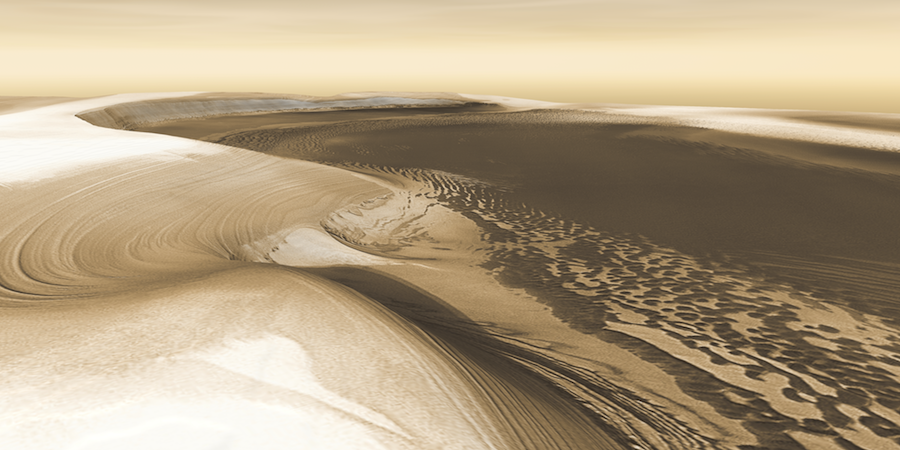

This is Chasma Boreale on Mars, a flat-floored valley (when seen from above) that is approximately 350 miles long, cuttingly deeply into the Red Planet’s northern polar icecap. The walls of this natural formation rise about 4,600 ft (1,400 meters) above the floor. You can see where the edges of the ice cap have retreated, now covered by the sheets of sand that accumulated over time, during an earlier series of ice-free climactic cycles. Furthermore, scientists believe the region was created following a cataclysmic flood that took place billions of years ago, back when Mars was much more wet and warm than it currently is.
For many reasons, Chasm Boreale is one of the most important geological feature of Mars; Just as we can study Earth-based tree rings to gather information about them and their environment, samples of dust from the canyon could unlock the answers to many of the mysteries that remain unsolved about the fourth planet from the Sun.
This particular image is a composite of images taken by the Thermal Emission Imagine System instrument on NASA’s Mars Odyssey, during the period between December of 2002 and February of 2005.
See a stunning high-resolution image here.
The Best & Most Beautiful Places On Mars:
[raw][/raw]